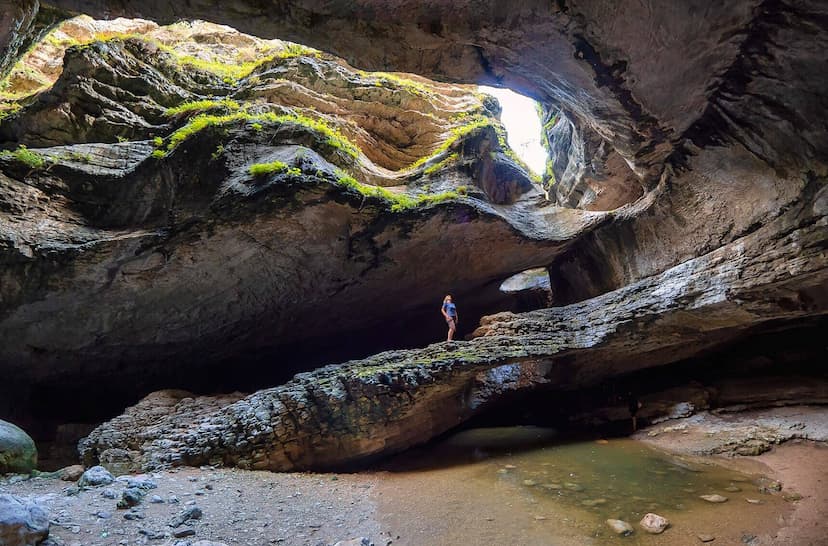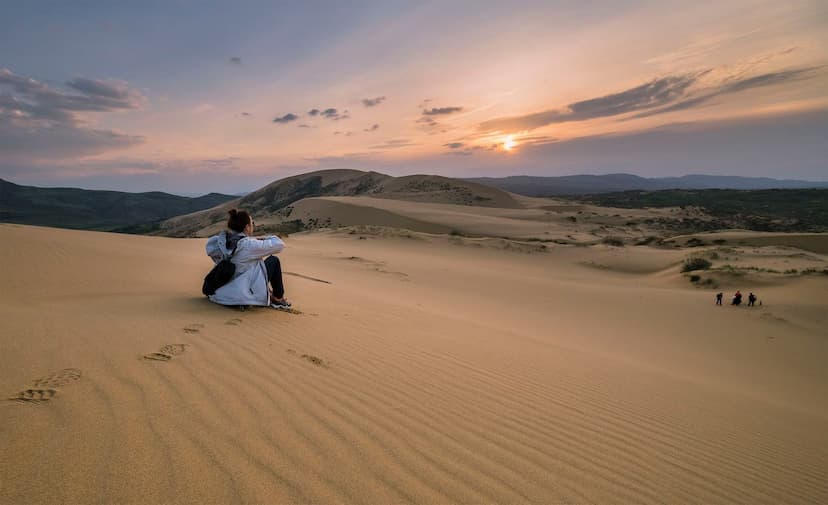The mysterious Dargavs in North Ossetia is the largest necropolis in the North Caucasus. It is mysterious, monumental, enchanting and picturesque - no wonder thousands of tourists come every year to see the ancient burials with their own eyes! We tell you how to get the most out of your trip to Dargavs.
A little about Dargavs
Dargavs is often called the city of the dead, and this expression can be taken literally. It is the largest necropolis in the Caucasus, with 95 above-ground crypts. From afar, Dargavs can really be confused with a real settlement: the crypts with triangular roofs and small windows look like rural dwelling houses.
Necropolis Dargavs is part of the National Museum of North Ossetia. By the way, in fact, the name “Dargavs” is actually the name of the village located one kilometer away from the burial grounds. The necropolis itself is called the Dargavs crypt burial ground, and its official name is the historical and architectural complex “City of the Dead” (this is how it is written on the museum's website).
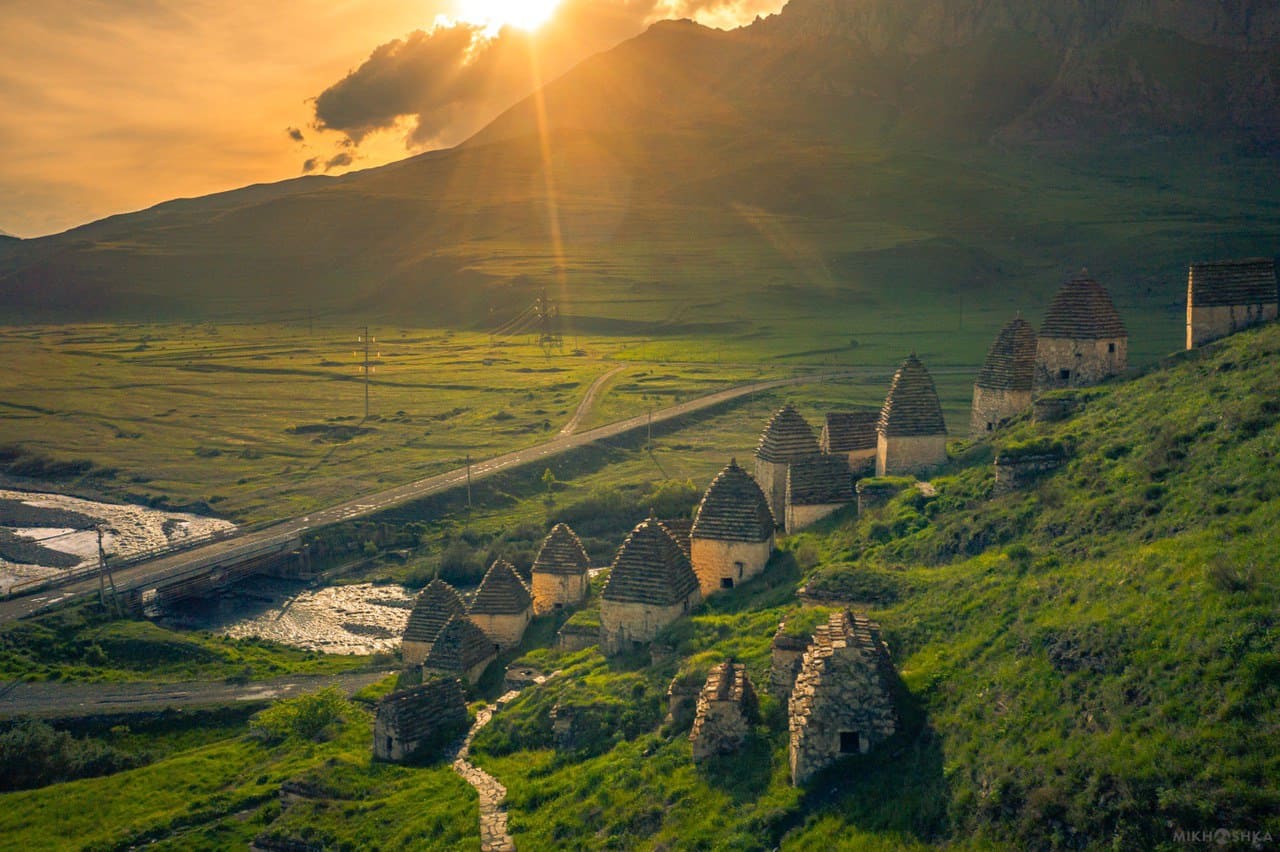
What makes Dargavs remarkable
The most interesting thing about Dargavs is its mystery. Why are the crypts above ground? Why are there so many of them? Who was buried in this necropolis? Why were the deceased inside the crypts stacked in rooks? Despite its relatively young age (“City of the Dead” in Ossetia appeared only in the XIV century), Dargavs still causes controversy among scientists. There are many theories that would explain the appearance of crypt burials in a people who always consigned the dead to the earth. Here are a few of the most notable ones:
- social stratification - the wealthiest villagers could afford to build a separate house for the deceased;
- the value of land - fertile land is highly valued in the mountains, and not everyone is ready to occupy it with cemeteries rather than crops. Crypts, on the other hand, can be built on denser soil without taking up much space;
- the influence of Zoroastrianism - according to the teachings of orthodox Zoroastrianism, dead flesh is dirty and defiles everything around it, so it should be “locked” in a stone crypt.
There is another theory, according to which the inhabitants of the surrounding villages sent sick people to the crypts to prevent them from infecting others. This theory fits well with the alleged date of the necropolis' origin: according to recent research, the Dargava crypt burial ground appeared around the 14th century, at the time when the plague was raging. This also explains why the necropolis was considered a kind of “exclusion zone” when archaeologists first came to excavate Dargavs.
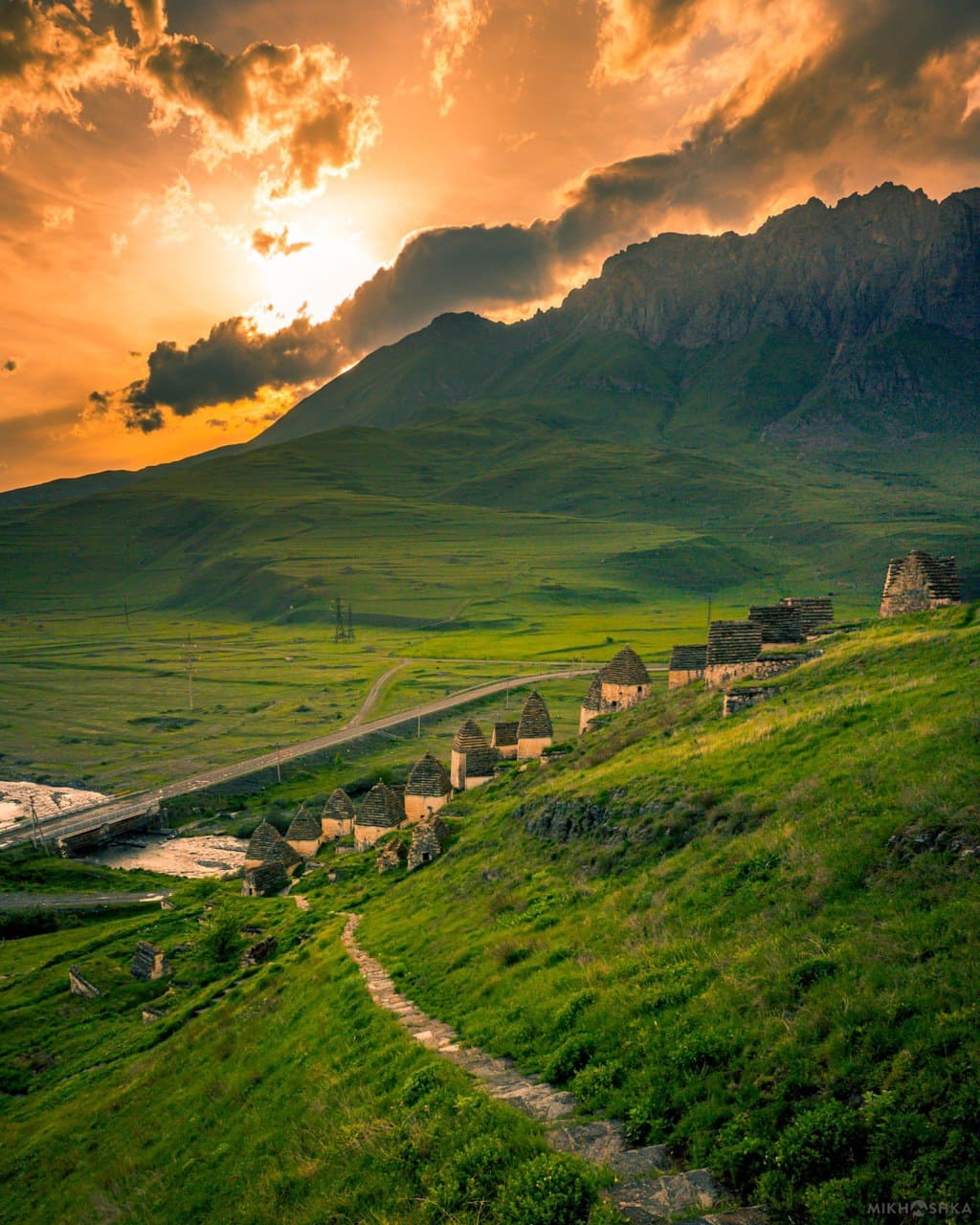
However, it was not possible to unequivocally confirm or deny this theory. When the crypts began to study archaeologists (and this happened in the 1920s), they asked for help from medics just in case. They studied the burials, conducted tests, but found no pathogenic microorganisms. So if there was a plague, now there is nothing left of it, and you can visit the crypts without risk to your health.
When archaeologists uncovered the crypts, they found well-preserved remains. It is believed that the decomposition was prevented by the mountain climate. These remains are still in the necropolis, and you can even look at them. Except that you do not need to photograph the dead: the museum staff do not like it.
In some crypts scientists found traces of internal locks on the doors. Why at burial the bolt was installed from the inside - still a mystery. Perhaps it had some ritual significance. Or maybe there really was a tradition of voluntary burial of sick fellow villagers in the Dargavs Gorge.
The necropolis is interesting not only for its man-made sights, but also for its nature. The crypts are located on a hillside near a high mountain range. There are practically no signs of civilization nearby (unless you count the road you take to get to the necropolis). The hill offers a wonderful view of the Giseldon River; it is quite shallow and narrow, but it sparkles beautifully in the sunset light. Despite the gusts of wind, there is often a peaceful silence here. In the fall, thick clouds descend very low, almost touching the tops of the mountains framing the gorge. Being in Dargavs at such a moment, you can feel yourself in a magical fairy tale like “Sleeping Beauty” - a picturesque enchanted corner, immersed in a peaceful sleep, charms both tourists and locals.

How to get to Dargavs
Now Dargavs belongs to the National Museum of North Ossetia, so the entrance to the necropolis is by tickets only. However, they are quite cheap - only 100 rubles for adults and 50 rubles for privileged people (pensioners and students). Children 7-18 years old can get into the “City of the Dead” for 30 rubles, and for those under seven years old, you do not have to pay. And if you have a Pushkin card, you can visit the necropolis for free, but for this you need to get tickets in advance on the website of the National Museum.
Officially, the necropolis is open to visitors from 10:00 to 18:00, but there is a nuance: in Ossetia it is not customary to visit cemeteries after sunset, so in winter the actual hours of operation are significantly reduced. So, already in November, the sun in Ossetia sets around 16:30. Of course, it is easiest to come to the excursion in summer or spring. But, if you have planned a trip in the fall or winter, be sure to check the time of sunset first: you will have to finish visiting the necropolis before the end of daylight hours.
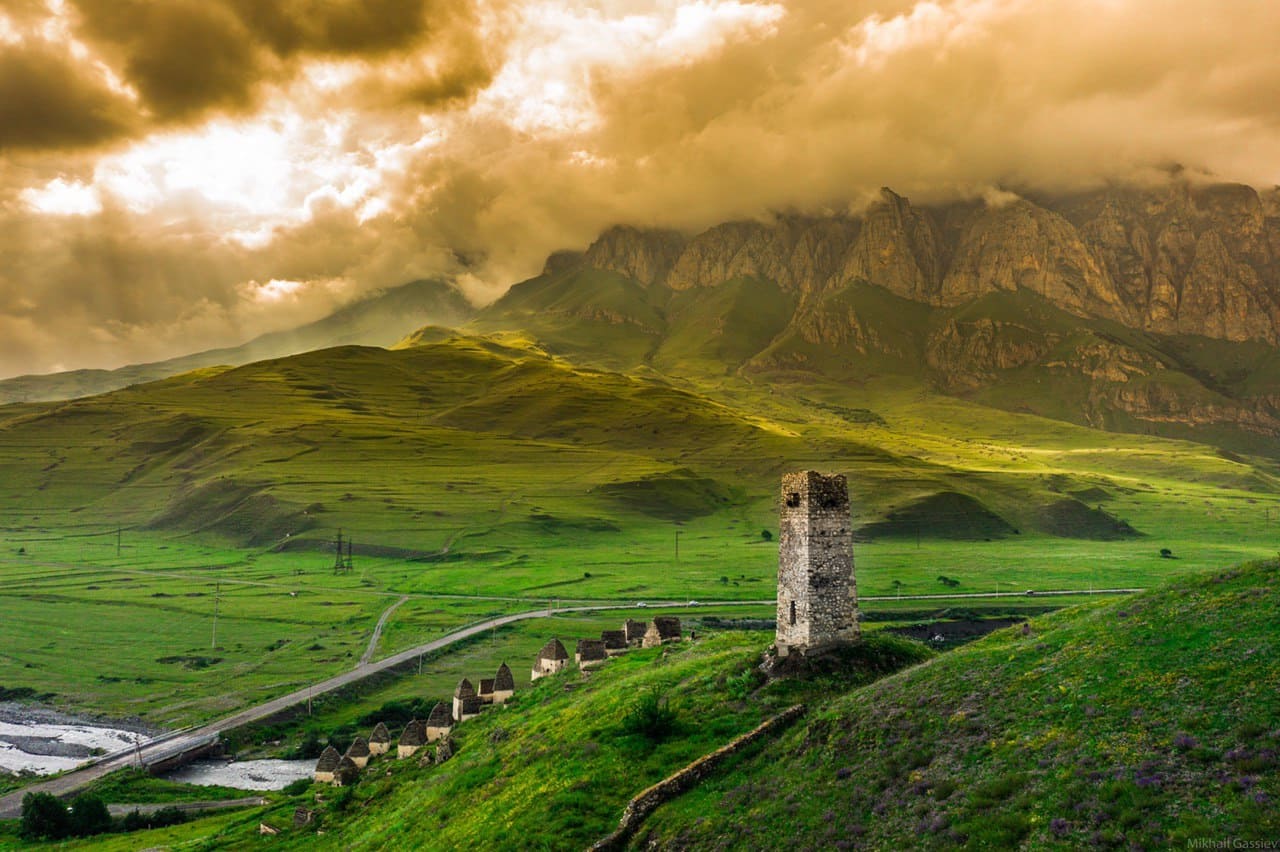
The excursion to the “City of the Dead” costs 500 rubles, and if you want to learn about the history of Dargavs (and not just admire the views of North Ossetia), you should pay for it. There are no information signs or stands in Dargavs that would tell you what kind of necropolis it is and what it is remarkable for. So, without a guide you will have to either just look at the pretty crypts, or search for information on the Internet yourself (and the network coverage there is very poor). However, if your goal is to admire the beauty and feel the mysterious atmosphere of the ancient necropolis, you can do without excursions. There is a special stone path laid out for visitors, which is convenient to walk along.
It is possible to take photos in Dargavs, but only of the crypts themselves. It is forbidden to take pictures of the remains (here the museum workers are adopting the experience of their Egyptian colleagues: in the pyramids now they also allow photographing everything except the deceased).
How to get to Dargavs by car
The easiest way to get to Dargavs from Vladikavkaz is by private car. True, the roads in the region are quite bad, so driving your favorite car is not the best idea. Where Dargavs is located, most often there are uneven unpaved roads with strong height differences. It is better to rent a car on the spot: you will save money on repairing your car. After all, it is quite expensive to repair the suspension, and most city cars are not adapted to steep unpaved roads, on which you will have to travel here.
The distance from Vladikavkaz to Dargavs is 43 kilometers if you drive along the Gizeldon River. The trip will take a little over an hour. But this road is quite bad: if you choose this route, it is better to rent an off-road vehicle with excellent cross-country ability like a Suzuki Jimny. However, for fans of national cinema this route may be the most interesting: the road runs through the Karmadon gorge, where the glacier collapse killed Sergei Bodrov Jr. and his crew during the movie “Svyaznoy”. The glacier now has the status of a nature reserve, and in Karmadon (the nearest village) there is a memorial plaque dedicated to the director and actor, as well as a separate monument to all the victims of the glacier.
How to get to Dargavs from Vladikavkaz without an off-road vehicle? In short, there is no way. But there is an alternative route through the village of Dzuarikau and Upper Fiagdon. You will make a small detour, increasing the distance to 65 kilometers, but you will be able to drive on better roads, so you can choose a car with a bias in comfort, for example, Hyundai Creta or Renault Sandero. Don't risk taking a city sedan even on this relatively flat road. The detour will take about an hour and a half.
Cabs will cost considerably more than renting a cab: for example, “private cab drivers” can charge from 1,500 for a one-way trip, while aggregators can charge even more. And getting back will be even more difficult - few cab drivers will travel that far, so the return trip can cost two or three times as much.
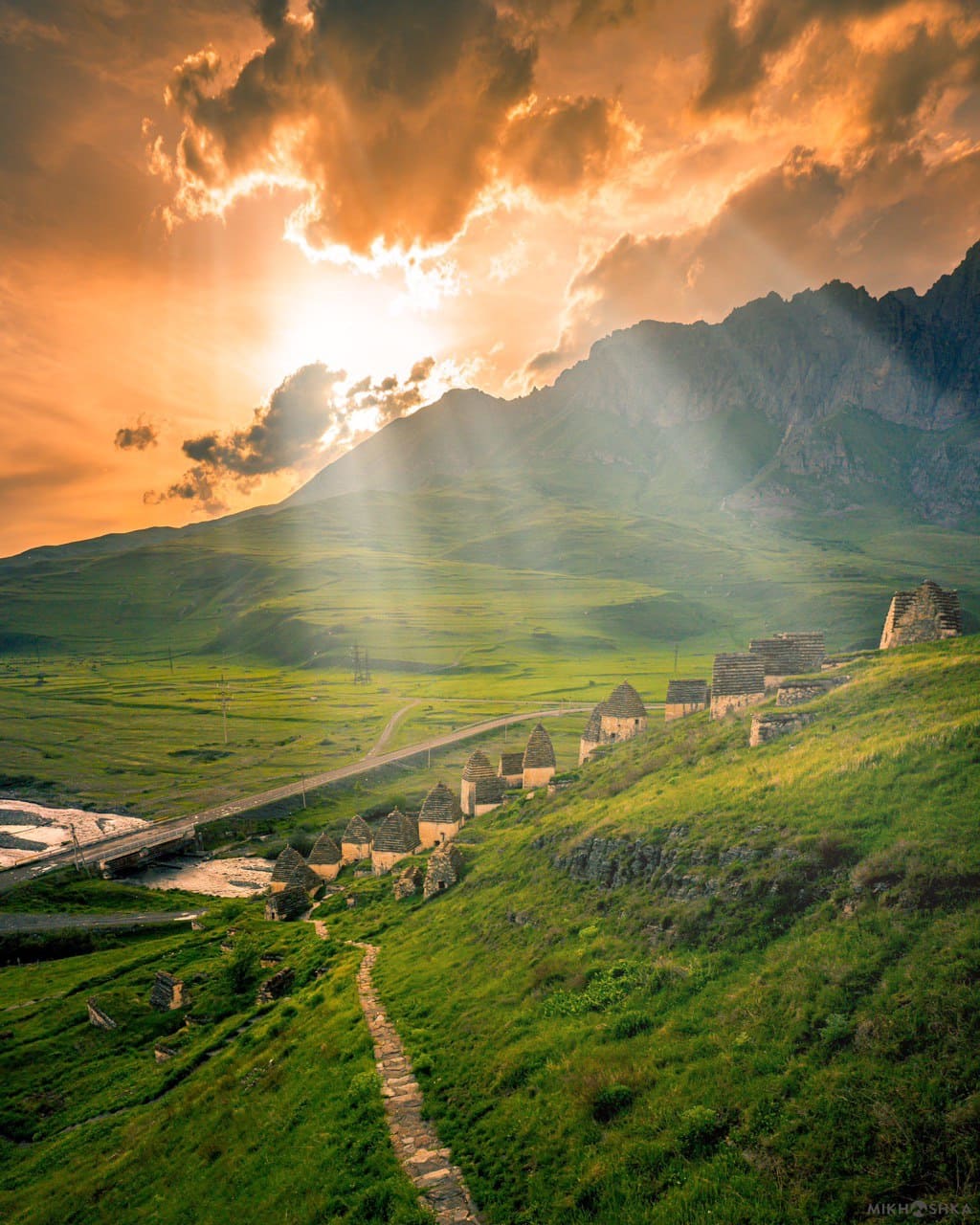
The best option is to get to Vladikavkaz by plane or train (if you don't live nearby), and then rent a good off-road vehicle and drive the remaining distance to Dargavs. This way it is cheaper and you have more opportunities: after all, there are a lot of interesting places in North Ossetia, and with your own car you will be able to make several detours to see them all.
Questions and answers for travelers
In what year was the Dargava necropolis founded?
Scientists don't give an exact date, but the first burials date back to the 14th century.
In what kind of shoes is it better to go to Dargavs?
The stone path for tourists is very flat, so you can wear any comfortable shoes: sneakers, boots, shoes (not on a stiletto). However, it should be taken into account that the necropolis itself is on a slope, and you will often have to go uphill.
Can I take water and food with me?
In Dargavs, tourists are not allowed to take food with them to the necropolis, so be sure to have a snack beforehand, so that your rumbling stomach does not distract you from the walk. But you can take water with you. If you forgot to buy a bottle, don't worry - right in front of the entrance to the museum there is an ice spring where you can get drinking water.
What else can you see near the “City of the Dead”?
Not far from the necropolis there are several other major attractions. First of all, we should mention the Balsag Wheel, a monumental structure referring to local mythology. It is located three kilometers north of the necropolis. In the Dargavs settlement itself (where the living dwell) there is the Mamsurovs' Tower. It is very high, so the sight is worth a short stop. If you are willing to drive a little further, you can enjoy the view of Midagrabi waterfalls. After the silence of the necropolis, their noise in contrast can impress many people, and that's why it's worth going to Dargavs in a rented SUV: this way you'll have more opportunities to explore the picturesque surroundings than by cab or public transportation.
How long does it take to drive from Vladikavkaz to Dargavs?
One to two hours (depending on the route). The short road is more difficult and steep, the long route can be traveled more comfortably.
Interesting facts and tips for tourists
All crypts in Dargavs are divided into three groups: above-ground, partially above-ground and underground. The latter are the oldest, and scientists are still arguing about whether they were originally built underground or went underground over time. By the way, underground crypts are not only the oldest, but also the most capacious. Most of them hide rooms at least 8 meters long.
Despite the fence and round-the-clock security, vandals from Dargavs and other cities quite often penetrate into the “Dead Town”. True, they usually do not cause any damage, but just take pictures with the remains. But because of the intruders, most of the windows and doors in the “houses” were blocked with wooden shutters. In order for tourists to see the interior of the crypts, the museum staff left open several vaults, which are constantly monitored by guards.
Do not try to find any logic in the arrangement of the lodges. There is no ritual or logical component here: people simply added new crypts as needed, and so the “City of the Dead” gradually grew, approaching Dargavs.
If you come to the necropolis on a sunny day, notice an interesting detail: in most crypts, the windows are arranged so that the sun shines in them as long as possible. The windows were usually on the south or east side of the structure. But the doors are arranged chaotically, without much uniformity. It is especially well seen if we consider Dargavs on a schematic map.
Dargavs looks quite ancient, but in fact the last burial took place here a little more than a hundred years ago: according to local history experts, it happened in 1915. In scientific circles there is an earlier date - the middle of the XIX century. Historians claim that since the 20th century local residents have gradually shifted to the modern style of burial (in coffins in cemeteries), abandoning crypts.
Not all crypts in the Dargav Gorge are gathered exactly in the “City of the Dead”. Some of them are scattered all over the area, but they are not fundamentally different from the burials in Dargavs.
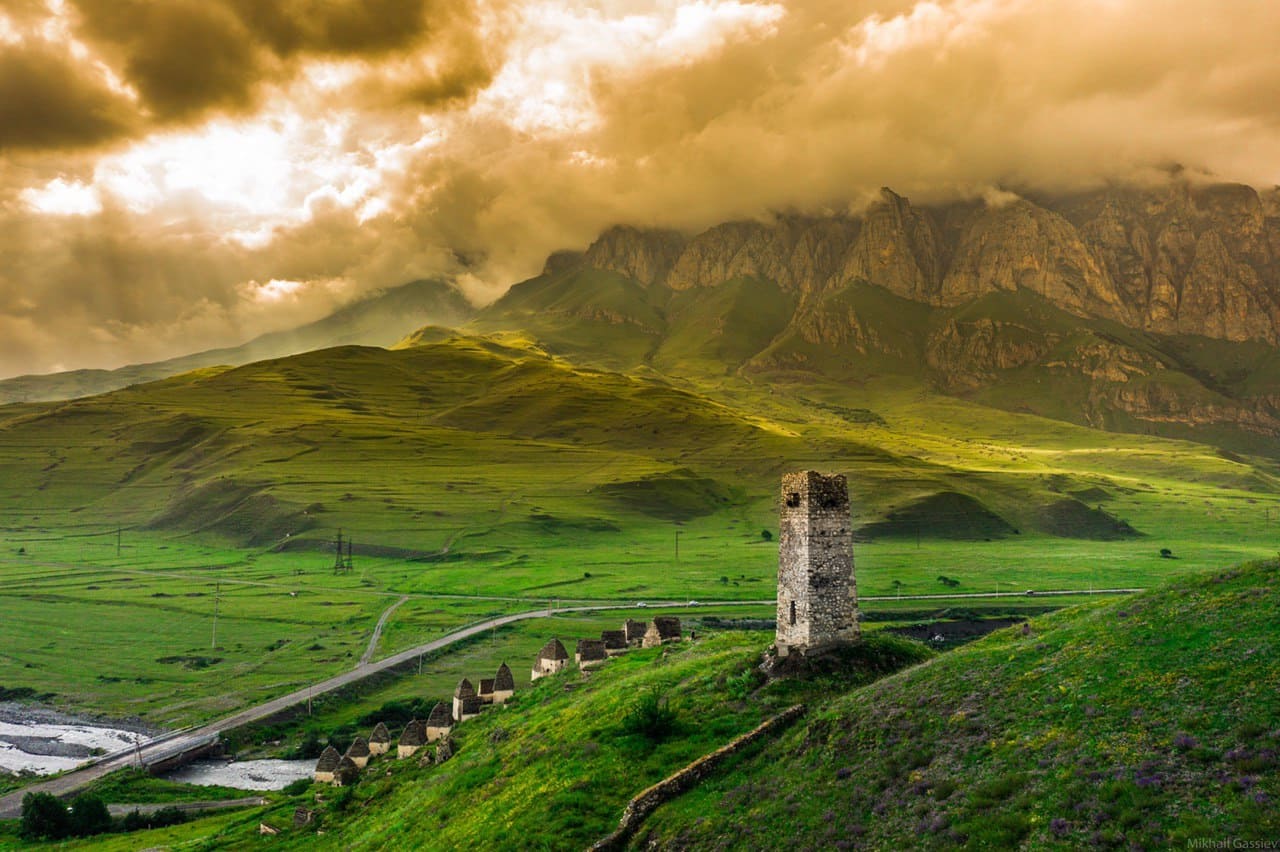
It is very windy in Dargavs (as everywhere in the mountains); even in mid-summer you can freeze because of sharp gusts. Be sure to bring a windbreaker or raincoat. You can buy them in Dargavs village near the necropolis, but they are sold there at a huge markup. It is better to take suitable clothes in advance.
By the way, for the same reason it is better to go to the mountains in a rented off-road vehicle - a heavier car, though it spends a lot of fuel, but it will be able to resist wind gusts more effectively. It is much safer to approach Dargavs with a solid car like Toyota RAV4, Land Cruiser Prado and so on. Come to the Caucasus, book a reliable, stable car with us and set off on your adventures!





